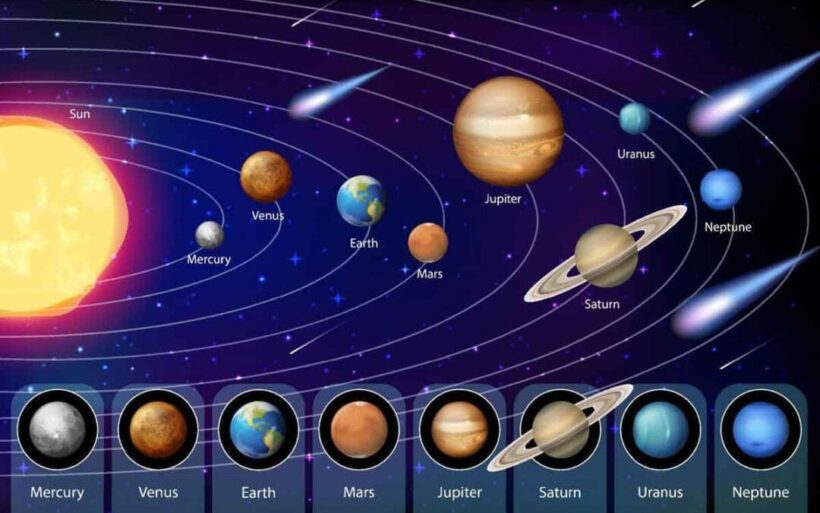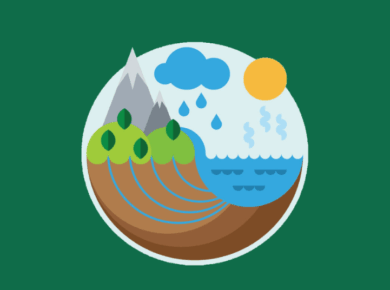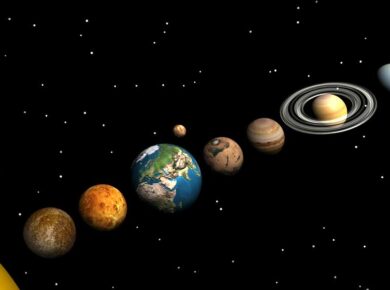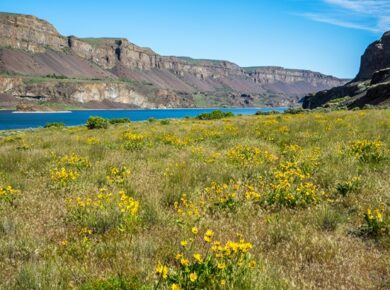Solar System & Planets
Solar System
- Our solar system consists of Sun + 8 Planets + 1 Dwarf planet (Pluto) + No. of Natural Satellites
- Pluto was demoted to dwarf planet at 26th general assembly of International Astronomical Union held at Czech Republic in 2006
- Only sun has its own light, which is also the nearest star to the earth.
| Size – Wise | Jupiter > Saturn > Uranus > Neptune > Earth > Venus >Mars > Mercury |
| Inner / Terrestrial Planets | Earth, Venus, Mars, Mercury |
| Jovian / Outer Planets | Jupiter, Saturn, Neptune, Uranus |
| No. of Satellites | Jupiter (63) > Saturn (60) > Uranus (27) > Neptune (13) > Mars (2) > Earth (1) > Venus (0) & Mercury (0) > (Moon at Jupiter were found by Galileo) |
| Time Period of revolution of Planets around the sun | Neptune > Uranus > Saturn > Jupiter > Mars > Earth > Venus > Mercury (88 days) |
- Asteroids – A belt of minor planets revolving around the sun between Mars & Jupiter
- All Planets revolve west to east around the sun except Uranus & Venus which moves east to west around the sun (Retrograde motion)
- A ray of light from sun takes about 8 mins 17 secs to reach the earth. Light takes about 1 second to reach us from the moon.
| Uranus | Maximum inclination of 98* towards the sun > known as lopsided planet |
| Earth |
|
| Mercury | No inclination at all |
| Venus |
|
| Mars |
|
| Jupiter | Distinguished from other planets by a circular light & dark bands |
| Saturn | Planet with three rings around it |
Famous Spacecrafts shot in Space
| Spacecraft | Planet | Agency |
| Messenger | Mercury | NASA |
| Curiosity | Mars | NASA |
| Viking | Mars | NASA |
| Pioneer | Jupiter | NASA |
| Cassini | Saturn | NASA / ESA / ASI (Italy) |
| New Horizon | Pluto | NASA |
| Aditya (2017-18) | Solar Corona | ISRO |
| Rosetta | Asteroids & Comets | ESA (Europe) |
| Phoenix | Collection of soil samples near the northern pole to search for water at Mars | NASA |
| Mars Orbiter Mission | Mars | ISRO |
Sun
- Sun is the only star in our Solar System as it has its own source of light and energy.
- Mass of the Sun accounts to 99.86% of our Solar System.
- Its average distance from the Earth is around 149,600,000 km.
- Sunlight takes about 8 min 17 secs to reach the Earth.
- Sun’s energy is produced by constant nuclear fusion in its core through a series of processes called the p-p (proton-proton) chain. This process converts Hydrogen into Helium.
Composition of sun
- Hydrogen > 74.9%
- Helium > 23.8%
- Metals > 1.3%
Structure of Sun
The structure of the Sun can be divided into several different layers as follows:
Core
- The core of the Sun has the highest temperature and pressure among all layers.
- The temperature of the core is around 15 million degrees Celsius – is in ionized state called plasma
- The solar energy is produced in the core by controlled nuclear fusion process.
- The high temperature in the core helps in removing the electrons from hydrogen atoms and in creating numerous electrons and protons for nuclear fusion.
Radiative Zone
- The Sun’s radiative zone is the section of the solar interior between the innermost core and the outer convective zone.
- In the radiative zone, energy generated by nuclear fusion in the core moves outward as electromagnetic radiation.
Convective zone
- In this zone the density of plasma is low.
- This zone transports hot and light density fluids from the core region of high energy & temperature to the outer region of low energy & temperature.
Photosphere
- This is the first visible layer of the Sun.
- The temperature here is around 6000-degree Kelvin (5370 degree Celsius).
- The solar spots are formed on this layer. The temperature of a solar spot is around 4500 degrees.
Solar spots > Temporary dark spots formed when the magnetic field bursts through the surface. It can slow down the flow of energy from the inside of the Sun – that’s what makes the sun spots cooler & darker than the surrounding photosphere.
Chromosphere
- Chromosphere literally mean as ‘sphere of colour’.
- This layer is dominated by emission lines.
Corona
- This is the outermost layer of the Sun.
- High temperature in this region gives it an unusual spectral feature of a highly ionised ion.
- Chromosphere & corona are visible only during formation of Diamond Ring during Solar eclipse.
Some Generic Space Terms
| Asteroid | A celestial body bigger than 10 m orbiting the Sun, mainly between Mars and Jupiter Made of rock and metal, they can also contain organic compounds. Are similar to comets but do not have a visible coma (fuzzy outline and tail) like comets do. |
| Meteoroid | A meteoroid is a small rock or particle of debris in our solar system. They range in size from dust to around 10 metres in diameter (larger objects are usually referred to as asteroids). |
| Meteor | A meteoroid that burns up as it passes through the Earth’s atmosphere is known as a meteor. If you’ve ever looked up at the sky at night and seen a streak of light or ‘shooting star’ what you are actually seeing is a meteor. |
| Fireball | A very bright meteor (brighter than the planet Venus). |
| Bolide | A fireball that explodes during its atmospheric flight, often with visible fragmentation. |
| Meteorite | The part of a meteoroid or asteroid that survives the passage through our atmosphere and reaches the Earth’s surface. |
| Comet | A smaller celestial body mainly composed of ice, rock and dust. As comets travel close to the Sun, some of the ice melts off and becomes a gas. This melting process causes bits of dust and debris to trail behind the comet. This tail can be seen in the night sky as a bright, quickly-moving light |
Halley’s Comet
- Halley’s Comet is arguably the most famous comet.
- It is a “periodic” comet and returns to Earth’s vicinity about every 75 years, making it possible for a human to see it twice in his or her lifetime.
- The last time it was here was in 1986, and it is projected to return in 2061.
The comet is named after English astronomer Edmond Halley, who examined reports of a comet approaching Earth in 1531, 1607 and 1682.
He concluded that these three comets were actually the same comet returning over and over again, and predicted the comet would come again in 1758.
For more updates, explore the Geography . Feel free to share your thoughts and comments.
If you’re passionate about building a successful blogging website, check out this helpful guide at Coding Tag – How to Start a Successful Blog. It offers practical steps and expert tips to kickstart your blogging journey!









4 comments
thankyou very much to share the knowledge.
Need to update the number of planet satellites…
It is immense material for UPSC exam revision….
very helpful …